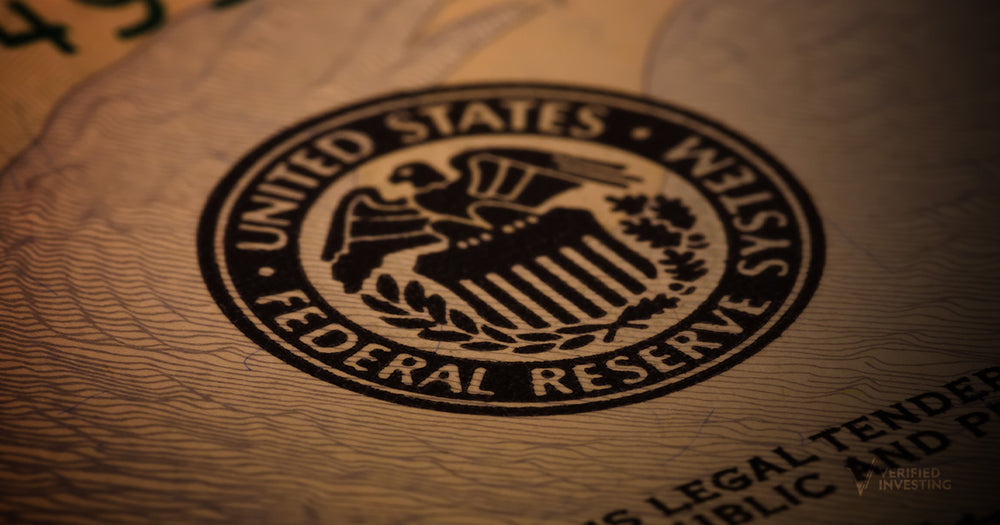History Of The Federal Reserve

The Federal Reserve has a dual mandate to maintain stable prices and conditions for maximum sustainable employment by controlling inflation.
The Fed’s goals haven’t always been so clear-cut. Neither has its independence to conduct monetary policy. Here is how it got to where it is today:
Founded by Act of Congress in 1913
Americans have always had an almost visceral antipathy toward big banks and a distrust of governments. The idea of a central bank ticked both those boxes.
Economic panics that regularly rocked the country in the 19th century motivated Congress to establish a central bank in 1913 to stabilize the banking system.
The Federal Reserve Act established a central bank comprised of twelve regional Federal Reserve Banks. A Board of Governors in Washington, DC, would set national monetary policy.
The Early Fed
The most important function of the early Fed was devising a national “elastic” currency under its control. This would allow it to expand the money supply in economic emergencies and contract it afterward. Along with acting as a lender of last resort for banks, this would stabilize the financial system and prevent bank failures.
The Fed During the Great Depression
The Fed was largely blamed for the onset of the Great Depression. Its laissez-faire approach to the economy led to the near-total collapse of the American banking system. As a result, Congress passed the Banking Act of 1933, better known as the Glass-Steagal Act.
Glass-Steagal included a provision replacing the Fed’s advisory Open Market Policy Committee with the Federal Open Market Committee (FOMC.) The main difference between the two was that the 12 Reserve Banks were required by law to follow the decisions of the FOMC.
The country entered a new recession in late 1937. This one was triggered by the government raising taxes and cutting spending while the Fed prematurely tightened the money supply.
The economy didn’t fully recover from these policy missteps until the nation moved to a war footing in 1941.
The Fed in WWII
The Fed's focus during WWII was supporting the war effort. To this end, the Treasury Department and the Fed agreed to cooperate to facilitate deficit spending by the government. For its part, the Fed engaged in yield curve control to keep interest rates low.
The Post-WWII Fed
The Treasury Department continued to dictate Fed policy after the war. It coerced the Fed into keeping interest rates low to reduce the cost of government borrowing. This increased the money supply and fueled inflation.
In 1951, the Fed decided to reassert its independence. To fight inflation running at 21%, it announced that it was ending yield curve control. The resulting confrontation with the Treasury Department led to the Treasury-Fed Accord, reaffirming the Fed’s independence.
The Fed and Stagflation in the 70s
The colossal debt that the US government piled up over the Vietnam War and new social programs sent inflation skyward in the 1970s. The Arab Oil Embargo over US support for Israel turned the situation into a full-blown crisis.
The inflation crisis was finally solved by Fed Chairman Paul Volcker in the early 80s, but not without a lot of pain. The “Volcker Shock” sent interest rates climbing to 20% to strangle inflation. Under Volcker, the Fed learned a hard lesson. Raising rates and keeping them there despite the economic harm it caused was necessary to defeat high inflation.
The Fed in the Global Financial Crisis
The Global Financial Crisis was the worst economic downturn since the Great Depression. It led central banks, including the Fed, to implement previously unimaginable policies like setting interest rates at zero percent. When that proved ineffective, the Fed began purchasing government bonds and mortgage-backed securities to increase the money supply (quantitative easing.) The markets soon became accustomed to access to cheap money. It sent bond yields zooming in a "taper tantrum" when the Fed began reducing its asset purchases in 2013.
The Fed abandoned monetary tightening when the COVID pandemic hit the US in March 2020. It enacted emergency measures to save the economy as massive quarantines forced much of the country to shut down.
The Fed Today
Today, the Fed works toward the normalization of monetary policy. The reluctance of the Fed to cut interest rates in 2024 can be traced back to the lessons learned under Volcker - it’s better to cut rates too late than too soon.